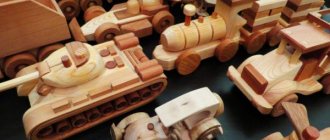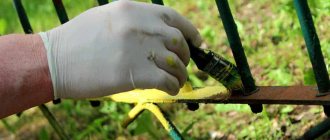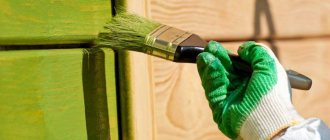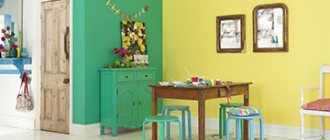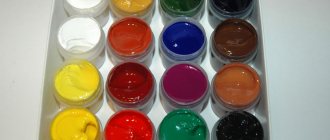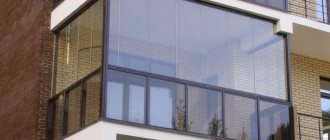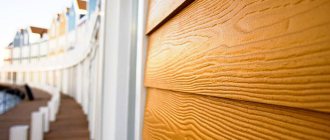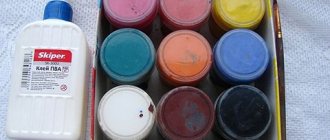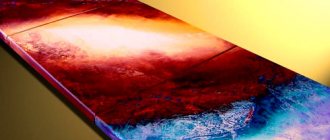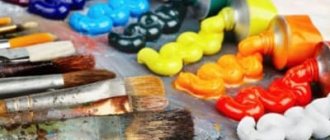Which paint is better, gouache or watercolor?
Which paint is better
for drawing.
Since school we have known these two paints
-
gouache
and
watercolor
.
... Differences between gouache
and
watercolor
| Properties and Features | Gouache | Watercolor |
| Density | Quite thick paint through which the paper layer does not show through | Translucent, due to the fine grinding of coloring pigments |
Comparison
The first difference lies in the composition of the products we are interested in. Gouache is made with the addition of white. In this regard, the paint after drying becomes significantly lighter and becomes matte. In general, the composition of gouache is similar to watercolor. Whereas water-dispersed acrylic has a structure similar to oil paints. It dries very quickly, which cannot be said about gouache. As long as the paint remains wet, it can be washed off with water without much difficulty. Acrylic is highly resistant, it does not fade in the sun, and does not spread when applying a new layer. With gouache everything is exactly the opposite. But it is much thicker and denser than acrylic paint. Due to the high content of coloring pigments, gouache is characterized by a very saturated color, and the pattern it creates is opaque. Acrylic paints lie on the surface much smoother, as if forming an invisible film on it. After drying they darken a little. Gouache gives a thicker and uneven layer. The transitions from one shade to another are quite abrupt.
Another significant difference between gouache and acrylic paint is the area of use of materials. As a rule, the first is used for drawing on paper of any thickness, and less often for painting fabrics. Acrylic is characterized by a wide range of applications. It is indispensable for painting ceilings, walls and other surfaces on a wooden or metal base. Creating drawings, painting on glass, decorating ceramic products, applying images to fabric and leather, airbrushing - the list of possibilities of acrylic paints is very extensive. This explains the relatively high cost of the material. If gouache is sold exclusively in sets with a certain number of jars in a box, then acrylic paints are often sold individually. They are bottled in a wide variety of bottles, be it miniature tubes of 20 ml or large bottles with the capacity of a standard glass.
Let's summarize what is the difference between gouache and acrylic paint.
| Gouache | Acrylic paint |
| Water-soluble paint made with the addition of white | Water-dispersed paint based on polyacrylates |
| The composition is similar to watercolor | The structure is identical to oil paints |
| Lightens after drying | It gets darker as it dries |
| Dries within a few hours | Dries in 10-15 minutes |
| Dissolves when exposed to water | Does not spread when applying a new layer |
| Not very durable and prone to fading | The stability is very high |
| Has a dense, thick and opaque texture | More fluid, lighter and transparent |
| Characterized by a very rich shade | The colors are much paler |
| Lays down in a thick, uneven layer | Lays down perfectly evenly, as if forming an invisible film on the surface |
| Transitions between shades are sharp | Transitions are smooth and imperceptible |
| Used for painting on fabric and paper | Has a wide range of applications |
| Affordable cost | The price is much higher |
| Sold in sets | Sold both in sets and individually |
| Fits in standard jars with a lid | Available in jars, tubes and bottles of various sizes |
Can acrylic paints be mixed?
To get new shades, you can mix acrylic paints
on the same principle as oil ones. Take a small amount of two or more colors and mix until a uniform shade is obtained.
Interesting materials:
Why do you need to Scrub your body? Why do you need to drain the first water when cooking meat? Why do you need to brake with the clutch? Why do you need to take care of your eyebrows? Why do you need to care for plants? Why do you need to moisturize your lips? Why does lactostasis form? Why do cysts form in the mammary gland? Why do tangles form? Why do endometrial polyps form?
Definitions
Gouache is a type of water-soluble adhesive-based paint with a dense matte texture. The product has a rich history, because it was used in medieval Europe. However, the term arose only in the 18th century in France. During the Middle Ages, gouache in combination with watercolor was used to create book miniatures. Renaissance artists used the material to complete sketches and other preparatory work. The heyday of technology occurred at the end of the 19th – beginning of the 20th century. Domestic artists painted theatrical costumes and posters with gouache, created sketches of scenery and large easel works. By the way, the word gouache is translated from French as “water paint”. It is made from adhesive pigments mixed with white. The latter give the paint a spectacular matte velvety finish. Despite the fact that gouache is an independent technique, it is extremely rarely used by professional artists. Many artists consider it suitable only for creating children's drawings and designing posters.
Gouache
Acrylic paint is a water-dispersed paint made on the basis of polyacrylates and their copolymers. It is used both in painting and in construction when carrying out external and internal work. It acts as a worthy alternative to oil paints. It can be applied to paper or planes in liquid (with the addition of water) or paste form. The last option is the most popular among professional artists. Acrylic does not crack, lays down as an even film, is slightly shiny and does not require fixing. Sometimes the paintings he painted resemble works done with watercolors or oil paints. However, in most cases, acrylic has a unique color rendition that is unattainable in other areas of fine art. Largely due to this, he enjoys wide popularity among contemporary artists.
Acrylic paints
Ways to improve the properties of gouache
It is known that this paint is not as bright as others. To increase color saturation and reduce dullness, you can use sugar water.
There is no need to pour the sweet syrup directly into the paint jar. The sugar will set over time. It will be impossible to restore such a composition. It is better to prepare the sweet water separately and dip it in the syrup before dipping the brush into the paint.
To make the colors in the picture more bright and shiny rather than dull, two tablespoons of granulated sugar are dissolved in half a glass of water.
When working on wood or plywood, it is necessary to reduce paint absorption into the surface. Then PVA glue or paste is added to the gouache. This makes it stronger and does not leave marks on your hands. This paint is smooth to the touch and shiny.
Life hacks when working with gouache
Not all parents are happy when their kids express a desire to paint. This is easy to understand. Gouache spilled on a table or clothes can ruin the mood of a mother and a young artist for a long time. To prevent this from happening, it is enough to dilute the paint with water in advance to the desired consistency. The jars themselves can be glued to small plywood. Then they will not tip over and spill.
Often the child spoils the paints by mixing colors and not rinsing the brushes sufficiently. This will not happen if you give him different brushes for each color, marking them with markers. Then the child will no longer need water, which means he will not be able to spill it on the floor, table or clothes.
All these life hacks will help you avoid troubles while painting with paints.
Various recipes for preserving watercolor and gouache paintings, secrets of the masters
So, the drawing in gouache or watercolor is ready, and done to perfection (unlike the hack work of would-be artists Ostap Bender and Kisa Vorobyaninov). What are the differences in preserving a design made with these paints?
What watercolor is afraid of: sunlight. It is better to put the drawing under glass. Try to keep direct sunlight away from your work.
What is gouache afraid of: fading. It is better to arrange the drawing in a passe-partout. Before doing this, it is a good idea to spray the work with a sugar solution. This will give some durability to the gouache colors.
Source
How to choose gouache for painting?
In addition, pay attention to the paint colors. Gouache
It should not have a poisonous, rich shade, and also should not contain a pungent and unpleasant odor. It should be the opposite, not sharp and not pronounced, and the paint itself in the jar should be a homogeneous mass, without lumps, and even more so without cracks.
Interesting materials:
How to file a complaint against a Yandex Taxi driver? How to file a complaint with the city administration? How to file a complaint to the European Court? How do I file a complaint with the Department of Defense? How to submit a complaint to the prosecutor's office electronically? How to share balance from Beeline to Tele2? How to share Spotify? How to share your geolocation? How to share a memory on Instagram? How do I share a memory in a story?
Characteristics of gouache
Gouache is a water-soluble adhesive-based paint. It has a dense and matte structure due to the white in its composition. Often gouache becomes the second coating that an artist masters after watercolor.
Gouache is a water-soluble paint with a dense structure.
It is intended for coloring the following materials:
- paper;
- cardboard;
- primed canvas;
- fabrics;
- plywood.
The kaolin and white contained in the paint allow you to create dense layers without streaks or blurring of the base. With its help you can paint pictures in various techniques: watercolors, glazes, brush strokes. Errors can be easily corrected by using an additional layer: in this case, it is permissible to apply a lighter color to a dark one.
The finished coating has no shine, which makes the pattern soft and velvety. After drying, the painting takes on a whitish tint. The composition is prone to cracking with an impasto style of writing. Paintings painted in gouache must be protected from moisture, dust and direct sunlight.
At first, a novice artist should learn to work with gouache, since it takes longer to dry and dissolves in water even after drying.
Gouache: work on a colored background
This option is great for drawings depicting the underwater world, the sky with clouds and birds flying across it. The easiest way to paint winter is with gouache. To do this, snowflake dots, Christmas trees and other objects are applied to blue or blue cardboard. You can use several colors or just one while drawing.
To complete the winter landscape you will only need white gouache. It represents snow, clouds, trees. You should not achieve complete uniform painting of objects with white. Some poorly painted areas add realism to the picture. They play the role of shadows.
Watercolor
Watercolor is produced in different forms: in ready-made palettes, in tubes and in liquids. To paint with watercolors, you need watercolor or cotton paper, brushes, and clean water. Watercolor is a water-activated paint. Therefore, the color saturation on the paper will depend on the amount of water you put on the brush. This type of paint is characterized by transparency, so rather than covering the paper with it, you leave a colored “trace” on it. Thanks to this property, various techniques are used when working with watercolors, for example, gradients, layering colors, etc. The most important thing when working with watercolors is time, since after the paint dries on paper, you may not get the result you expected. If you need to achieve uniform coverage of the paper with color, you should first go over the desired area of the drawing with a wet brush without paint, while distributing the water evenly over the paper. Otherwise, you cannot avoid unwanted texture and accumulation/lack of pigment in different parts of the drawing, sharp lines. When working with watercolors, it is important to remember that color density must be achieved in layers, that is, from light to dark.
Tip: When working with watercolors, you can mix in white gouache to make the color pastel.
What is the difference between gouache and acrylic
Beginning artists are recommended to first master the technique of painting with gouache and only after that move on to acrylic paints, which are a tool for the work of professionals. The difference between these two compositions lies in several parameters.
Acrylic is less viscous, dense and easier to apply to the canvas. But it dries quickly and requires dilution with water at low speed. The pigment in it is more concentrated, which reduces material consumption. After drying, acrylic paints darken, while gouache takes on a lighter shade.
Another difference between acrylic and gouache is that it is not subsequently washed away by water. Dried acrylic paint cannot be washed off from the canvas, brushes, or palette. The gouache material mixed on the palette can be reused if you add water to it . This technique does not work with acrylic.
Making gouache at home
This creative material is not very expensive in the store. Therefore, making it at home is not always a wise decision. But sometimes you urgently need to paint something in gouache, but the store is already closed. For example, your baby suddenly really wanted to create a picture. Then you will need to know how to make gouache with your own hands.
There is a chalk paint option. It requires regular chalk, water and a coloring pigment.
- The chalk is finely crushed.
- The powder is poured into a jar.
- Pigment is added.
- Dilute the mixture with water.
The second method is simpler. Instead of chalk, use white toothpaste. Pigment is added to it and stirred.
You can additionally add PVA glue to make the paint brighter.
The third method is identical to the second, but the toothpaste is replaced with shaving foam.
The fourth recipe uses flour (half a kilo), salt (2 tablespoons), vegetable oil (2 tablespoons) and water. All this is mixed with a mixer. Add water little by little until the mixture reaches the desired consistency.
The base is poured into jars. Pigment is already added to them. Then the homemade gouache is thoroughly mixed.
You can use food coloring, poster ink, printer ink, or ink as a pigment. Powdered watercolor will also work.
